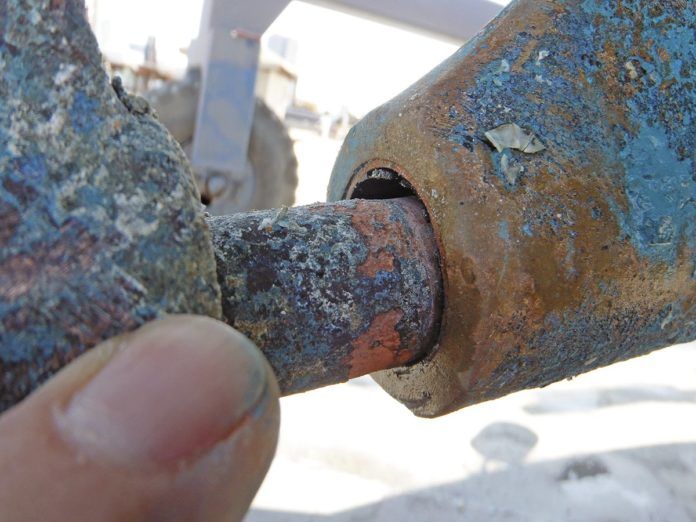First, it’s time to clear up a little nomenclature debate. We are speaking here about the cutless bearing, the bearing for propeller shafts, which should not cut into your propeller shaft (although it surely can, if not maintained properly). We are not exploring the resting place for your trusty cutlass, the favorite tool of pirates. It is important to note that not everyone adheres to the time-honored distinction between cutless and cutlass in the Practical Sailor stylebook. In fact, many more entries for cutlass bearing than cutless bearing will pop-up in a Google search. Sorry Google, we stick to our guns on this one.
The cutless bearing supports the propeller shaft of your vessel while allowing it to turn freely without damage. Cutless bearings are typically made of brass with an interior rubber lining, which contains grooves running the length of the bearing. These grooves allow water to enter the cutless bearing to keep everything cool and lubricated while the shaft rotates within. Problems occur when the bearing lining (and grooves) wear down, which both reduces the flow of cooling water and introduces looseness or play in the bearing.
To determine if your cutless bearing needs replacing, look for signs of wear or deterioration at both ends of the bearing. Rapid or unusual wear patterns (i.e. top wear on one end of the bearing, bottom wear on the other) are indications of significant shaft misalignment issues and should be addressed immediately.
Next, simply grab the prop or shaft and give it a couple of good, firm shakes to detect shaft looseness within the bearing. Slight movement (say 1/16 or so) is borderline, but if you can produce visible shaft wiggle or an audible thunk when shaking the prop, the bearing is definitely due for replacement.





































Cutless is a brand name for the bearing from Johnson, who developed the product an age ago. A bit like calling a vacuum cleaner a Hoover.
Couldn’t agree more with this advice and recommendation. My boat is out of the water for annual maintenance and as always, I performed the check described in the article. My cutless bearing showed an ever-so-slight movement enough to indicate it needed replacement after 6-7 years of use including 3 trips to the Bahamas and back. I’m a firm believer in preventive maintenance so it’s on the punch list. Now if the darn thing were only easier to remove…..